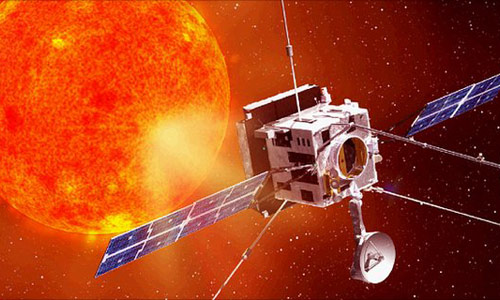Aditya L1 Mission: ISRO’s first sun mission to take off in 2019
The India Indian Space Research Organisation (ISRO) is set to launch first solar mission Aditya-L1 in 2019. It will be India’s first dedicated scientific mission to study sun.
The mission aims to put 1,500-kg heavy class Aditya-L1 satellite into halo orbit around Lagrangian point L1, a point between Sun and Earth. This point is at a distance of about 1.5 million km from earth.
Key Facts
The mission is a joint venture between ISRO and physicists from various institutes including Indian Institute of Astrophysics (Bengaluru), Tata Institute of Fundamental Research (Mumbai) and Inter University Centre for Astronomy and Astrophysics (Pune). Aditya L1 satellite will be launched by using PSLV XL. The launch will take in early part of next solar cycle. The satellite will be programmed to orbit L1 point and image sun’s magnetic field from space for very first time in world. Scientists hope to capture close-ups of sun from here, uninterrupted by eclipses for years.
Objectives of mission
- Study dynamic nature of sun’s outer most layers, the corona and the chromosphere, and collect data about Coronal Mass Ejections (CME).
- Study on origin of solar storms and their path through the interplanetary space from the Sun to the Earth.
- The studies will also focus on collection of information for space weather prediction.
Payloads of mission
The Aditya-L1 mission will carry seven payloads
- Visible Emission Line Coronagraph (VELC): It is largest payload or instrument aboard Aditya-L1 satellite. It will study diagnostic parameters of solar corona and dynamics and origin of Coronal Mass Ejections (CMEs). It can also measure magnetic field of solar corona down to tens of Gauss.
- Solar Low Energy X-ray Spectrometer (SoLEXS): It will be used for monitoring X-ray flares (1–30 keV) for studying the heating mechanism of the solar corona.
- High Energy L1 Orbiting X-ray Spectrometer (HEL1OS): It will be used to study hard X-ray emission from 10 keV to 150 keV during the impulsive phase of solar flares.
- Solar Ultraviolet Image Telescope (SUIT): It will take images of spatially resolved Solar Photosphere and Chromosphere in near UV region and measure solar irradiance variations.
- Plasma Analyser Package for Aditya (PAPA): It will study composition of solar wind and its energy distribution throughout the lifetime of mission.
- Aditya Solar Wind Particle Experiment (ASPEX): It will study the variation of solar wind properties, its distribution and spectral characteristics.
- Magnetometer: It will be used to measure magnitude and nature of interplanetary magnetic field.

Lagrange point
Lagrange point is position in space where combined gravitational forces of two large bodies, such as Earth and sun or Earth and moon, equal centrifugal force felt by a much smaller third body. The interaction of these forces creates point of equilibrium where spacecraft may be “parked” to make observation.
These points are named after Joseph-Louis Lagrange, an 18th-century mathematician. There are 5 such points between earth and sun namely – L1, L2, L3, L4 and L5. In these orbits, the satellite requires very little energy to maintain its orbit and it will not be eclipsed from the sun.
Few space agencies that have successfully placed their satellites at this location are Solar and Heliospheric Observatory (SOHO), a NASA-ESA collaboration involving America and Europe and NASA’s Advanced Composition Explorer (ACE) to exclusively study the sun and space weather, respectively.
Month: Current Affairs - November, 2017



Sfffg
July 23, 2019 at 8:27 pm🇮🇳🇮🇳🇮🇳 👏👏👏👌👌👌🙌🙌🙌